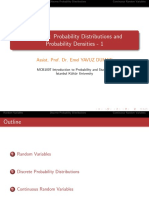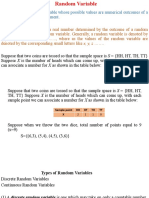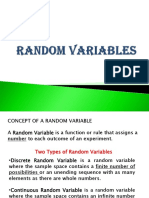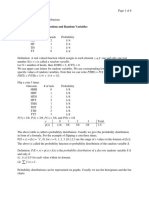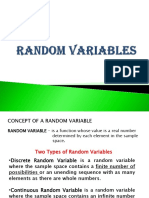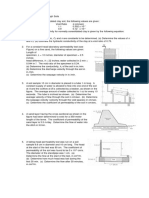0% found this document useful (0 votes)
52 views28 pagesRandom Variables & Distributions Guide
The document discusses random variables and their distributions. It defines random variables, discrete and continuous random variables, and provides examples. It then discusses probability distributions and their properties. It shows how to find the probability distribution function from the probability values or sample space of a random variable. It also discusses the cumulative distribution function and how it relates to the probability distribution function. Finally, it provides examples of finding probability distributions and CDFs from sample spaces or probability values of random variables.
Uploaded by
Taha IbrahimCopyright
© © All Rights Reserved
We take content rights seriously. If you suspect this is your content, claim it here.
Available Formats
Download as PDF, TXT or read online on Scribd
0% found this document useful (0 votes)
52 views28 pagesRandom Variables & Distributions Guide
The document discusses random variables and their distributions. It defines random variables, discrete and continuous random variables, and provides examples. It then discusses probability distributions and their properties. It shows how to find the probability distribution function from the probability values or sample space of a random variable. It also discusses the cumulative distribution function and how it relates to the probability distribution function. Finally, it provides examples of finding probability distributions and CDFs from sample spaces or probability values of random variables.
Uploaded by
Taha IbrahimCopyright
© © All Rights Reserved
We take content rights seriously. If you suspect this is your content, claim it here.
Available Formats
Download as PDF, TXT or read online on Scribd
/ 28














